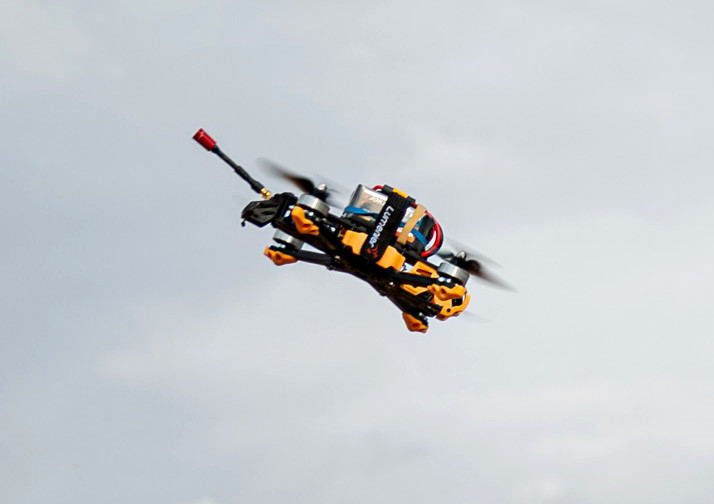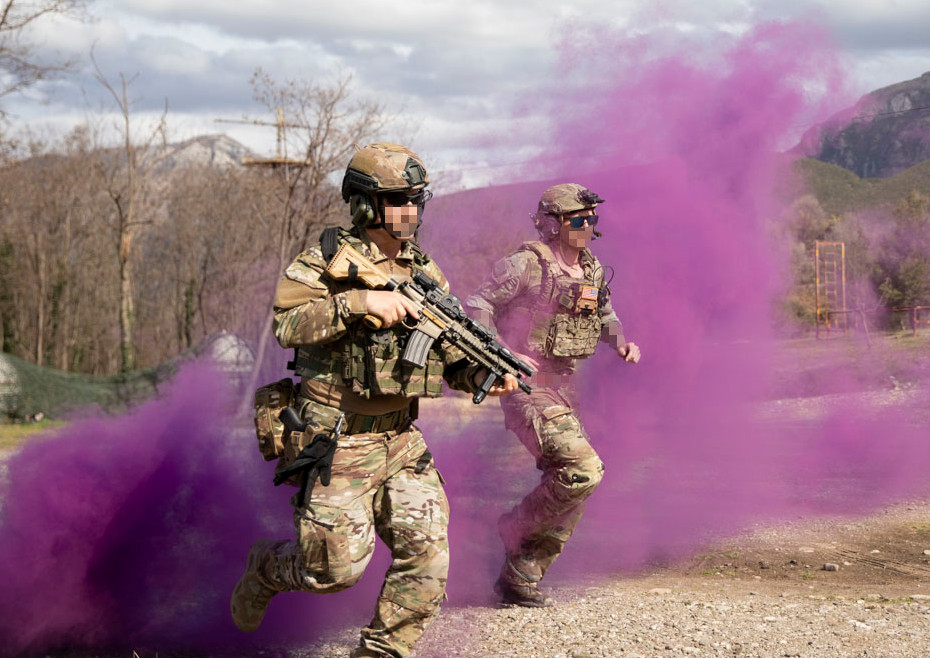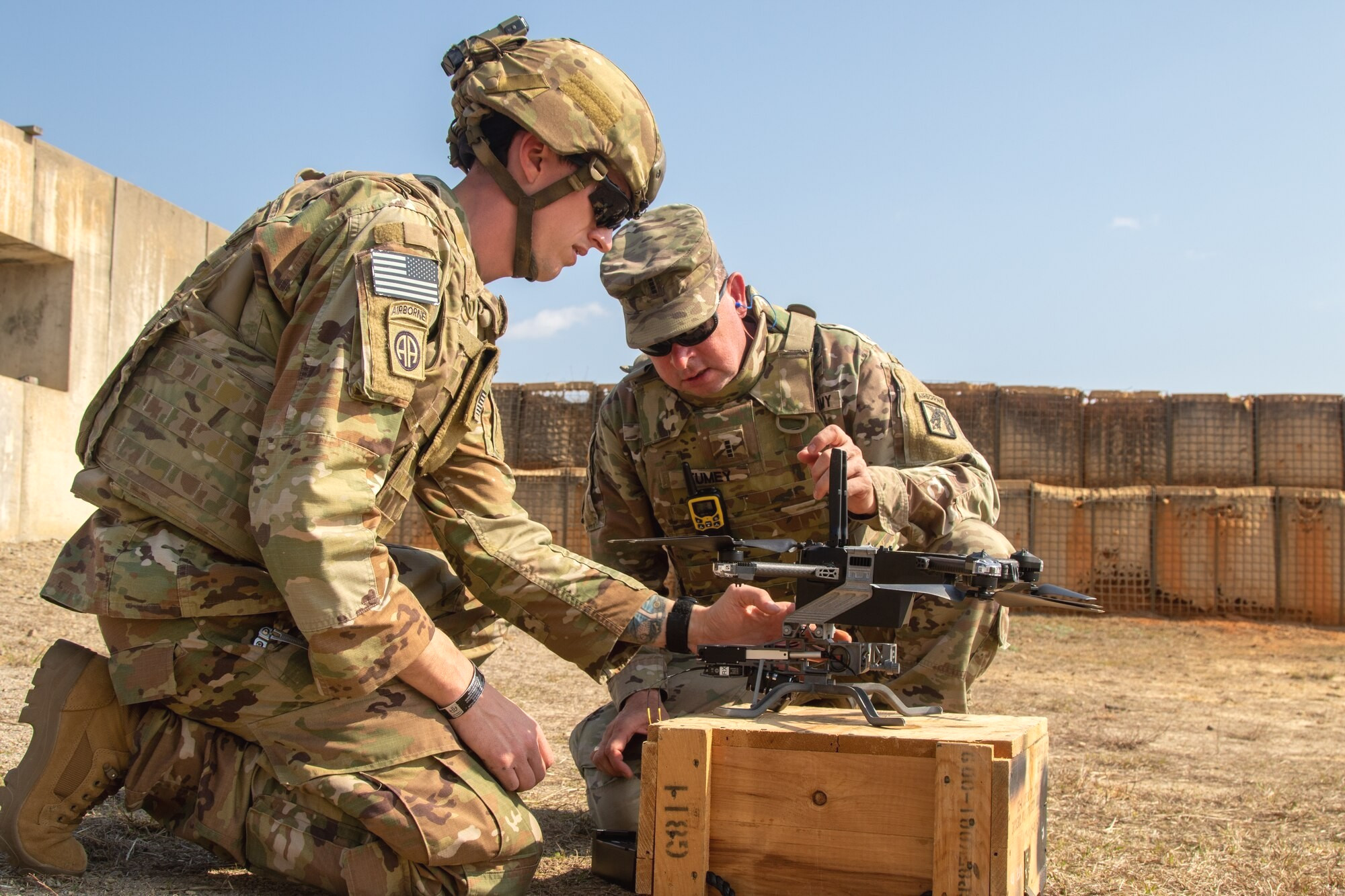An ‘A-Team’ of U.S. Army Green Berets will receive specialized drone training, including about using first-person view (FPV) types, ahead of an upcoming scheduled rotational deployment. This will help the Special Forces soldiers be better prepared to train foreign allies and partners on the use of uncrewed aerial systems, including potentially in Ukraine. It will also prepare them to be able to use those capabilities for their own local surveillance and force protection purposes while forward deployed in dangerous locales.
The explicit inclusion of drone skill sets in the pre-deployment workup for the Green Berets underscores how the war in Ukraine has brought the value of drones and appreciation for the threats they pose fully mainstream. At the same time, it also highlights how the U.S. military is still lagging behind in many ways when it comes to this reality. This is particularly apparent in the slow pace at which the branches of America’s armed forces have been moving to acquire FPV-type and other kinds of kamikaze drones, despite them now often being discussed as having nearly the same level of significance as artillery on Ukrainian battlefields.
The Army announced earlier this month that it had hired private contractor Flymotion to provide drone and non-standard vehicle training services to a Green Beret A Team from the 2nd Battalion of the 10th Special Forces Group (Airborne), or 10th SFG(A), out of Fort Carson, Colorado. Since Flymotion received a sole-source deal, Army officials had to provide detailed justifications for not using typical competition contracting processes.

“10th SFG(A) is requesting a contractor to provide non-personal services on non-standard vehicle operations, evasive maneuvers, ISR [intelligence, surveillance, and reconnaissancec] in convoy operations, ISR platform build, drone employment, FPV drone operations, to include vehicles for mobility training and drones/components for drone operations,” the Justification & Approval (J&A) document or the sole-source contract explains. “Through this training, they aspire to mitigate risk and enhance mission effectiveness in an OCONUS JCET [Outside the Continental United States Joint Combined Exchange Training] environment as well as semi-permissive and hostile areas to which Special Forces Companies may deploy (in particular Ukraine) utilizing internal Detachment surveillance (Unmanned Aircraft Systems-UAS) technology.”
“The impact if the training opportunity is not granted is that 10th SFG(A) 2nd Bn [Battalion] would lose the ability to train drone and vehicular operations prior to their validation exercise in May 2024 and SOTF 10.1 rotation, thus loosing [sic; losing] the capability to teach and apply these critical skills,” the contracting document continues. “This training is part of an already approved validation pathway for 10th SFG 2nd Bn and, if denied, will greatly disrupt the ODA’s ability to apply the training to further validation events.”

ODA refers to an Operational Detachment Alpha, more commonly known as an A-Team, the smallest standardized Army Special Forces unit.
Flymotion was picked because “generally, the following issues existed for most vendors: they lacked the technical expertise to provide [the desired] instruction… ; they utilized drones manufactured in China which is against installation policies; they did not offer military solutions for training; and they did not provide training with complexities of European Theatre in mind,” the J&A adds.
The Joint Combined Exchange Training mentioned in the J&A is a kind of very small and short-duration training engagement that Army Green Berets and other U.S. special operations forces conduct regularly in various countries around the world. JCETs typically focus on practicing relatively basic skill sets, as well as exchanging tactics, techniques, and procedures, and are primarily conducted with members of foreign special operations and other elite units.

Whether or not there is any actual plan for the 10th SFG(A) A-Team to make a JCET or JCET-like deployment to Ukraine proper during its upcoming rotation is unknown. The War Zone has reached out to the Army and U.S. Special Operations Command (SOCOM) for more information.
It has been reported in the past that small teams of U.S. special operations forces have operated inside Ukraine out of the Embassy in Kyiv conducting training and advise-and-assist missions away from the front lines, as well as providing force protection for visiting dignitaries. American special operators, including members of the 10th SFG(A), are also known to be helping train Ukrainians in neighboring countries like Poland. American officials have just recently been publicly discussing the potential for larger in-country training efforts down the road.
Discussions about operating highly maneuverable FPV drones and other kinds of uncrewed aerial systems would undoubtedly be an important part of any future training engagement with Ukrainian forces inside the country or anywhere else. The use of FPV-type kamikaze drones, as well as other lower-end weaponized types, has become a fixture on both sides of the battlefield in Ukraine. The conflict has brought the value of and threats posed by lower-end drones fully into the mainstream consciousness.
“I think you’re seeing essentially a new type of trench warfare in Ukraine from that perspective,” Gabe Camarillo, the Under Secretary of the Army, said today at an online talk hosted by the Center for a New American Security think tank in Washington. Camarillo was speaking more specifically about the speed at which innovation in drone technologies is being observed in Ukraine, as well as the development of countermeasures and counter-countermeasures.
“The [primary] way that both [the Ukrainians and Russians] are overcoming this [countermeasures] is with mass,” he added. “And, so, the ability to achieve effects by having such low-cost capabilities that… you were able to flood the zone.”
At the same time, drones, and especially the threat that armed types present on and off the battlefield, are not in any way limited to the ongoing war in Ukraine, nor is this really new. The barrier to entry is also low, meaning that smaller nation states and even non-state actors, from terrorists to criminal gangs, are among those increasingly availing themselves of these capabilities to varying degrees. These are all things that The War Zone has been highlighting for years.
“I think what we’re seeing, and not just in Ukraine, but really around the world, is that the availability and the impact of small unmanned aerial systems and the threats that they present on the battlefield is here to stay,” Army Undersecretary Camarillo said today at the CNAS talk. “It is an evolution of a scale that is rapidly increasing to change the battlefield. So, in a nutshell… [this threat] is complex, ubiquitous, and is really transforming what the battlespace looks like.”
“It is very difficult to remain concealed in this environment. It is a very contested and congested battlespace,” he continued. “We know that electromagnetic signature[s], the availability of ISR capabilities brought about by these UAVs, really prevents any forces from being largely concealed or massed together.”
All of this is well known to the U.S. special operations community, too.
“I’ve been in the Army for 38 years, and in my entire time in the Army on battlefields in Iraq, in Afghanistan, Syria, I never had to look up,” now-retired U.S. Army Gen. Richard Clarke, then head of U.S. Special Operations Command (SOCOM), said at the annual Aspen Security Forum in July 2022, just months after Russia’s full-on invasion of Ukraine. “I never had to look up because the U.S. always maintained air superiority and our forces were protected because we had air cover. But now with everything from quadcopters – they’re very small – up to very large unmanned aerial vehicles [UAV], we won’t always have that luxury.”
“The cost of entry into this, particularly for some of the small unmanned aerial systems, is very, very low,” he continued. “I think that this is something that’s gotta continue to go up in terms of our priority for the protection, not just of our forces that are forward today – that’s the current problem – but what’s gonna come home to roost. Some of these technologies could be used by our adversaries on our near abroad or even into our homeland.”
For Army Green Berets and other U.S. special operators, drones of all types will only continue to become increasingly ubiquitous components of operations, including foreign training engagements well beyond Ukraine. In February and March, U.S. Special Operations Command Europe (SOCEUR) released pictures showing other members of the 10th SFG(A) using FPV-type drones as part of the latest iteration of the Trojan Footprint exercise. Trojan Footprint is SOCEUR’s premier annual special operations training event in the region and also includes the participation of various allies and partners.

The ever-growing pervasiveness of drones is a reality that applies to the rest of the U.S. military, too. Just when it comes to the Army, new efforts to acquire and field FPV drones, as well as types tethered to vehicles, are set to become formal programs of record in the 2025 Fiscal Year, one of the service’s senior officials recently told Defense One. The FPV types could be used for surveillance and reconnaissance missions, or be equipped with small munitions or payloads to conduct kinetic and non-kinetic attacks on enemy forces. They could take on other roles, as well.
“Drones might provide an edge in reconnaissance, communication extension relays, electronic warfare, and lethal strikes,” Army Lt. Col. Michael Brabner, who is in charge of smaller drone efforts within the Maneuver Capabilities Development and Integration Directorate (MCDID) at the service’s Maneuver Center of Excellence, explained, according to Defense One. “His office has worked with the 82nd Airborne [Division] to rig Skydio RQ-28A quadcopters to drop live M-67 fragmentation grenades.”

If it were to be signed into law in its present form, the latest draft of the annual defense policy bill, or National Defense Authorization Act, for the 2025 Fiscal Year from the House of Representatives would also compel the Army to establish a dedicated drone and counter-drone branch just like the ones it has for things like more traditional aviation, armor, and air defense.
The entire U.S. military is looking at an increasingly uncrewed future down to the lowest levels. Earlier this month, the Pentagon announced that an Army effort to acquire Switchblade 600 loitering munitions and a maritime-focused drone boat swarm project were among the first tranche of submissions picked to receive special attention through its Replicator initiative. Replicator aims to help accelerate the development and fielding of thousands of uncrewed and also highly autonomous systems in just a matter of years.

There are also growing pushes across the branches of the U.S. armed forces for new and expanded counter-drone capabilities, another area where America’s military is still very much playing catch-up. In a report accompanying their recent draft NDAA, members of the House Armed Services Committee advocated for more “innovative counter-unmanned aerial systems detect and defeat capabilities,” including ones leveraging artificial intelligence (AI) technologies, and demanded a joint briefing from the Army, Navy, and Air Force on what is being done now in this regard.
Altogether, it is not at all surprising that the Green Berets from the 10th SFG(A) were keen to secure specialized drone training ahead of their upcoming rotation, especially with the prospect of a JCET or similar engagement inside Ukraine proper. Adding various drone-related skills to pre-deployment workups only looks set to become more and more normalized for both special operations and conventional forces.
Contact the author: joe@twz.com
